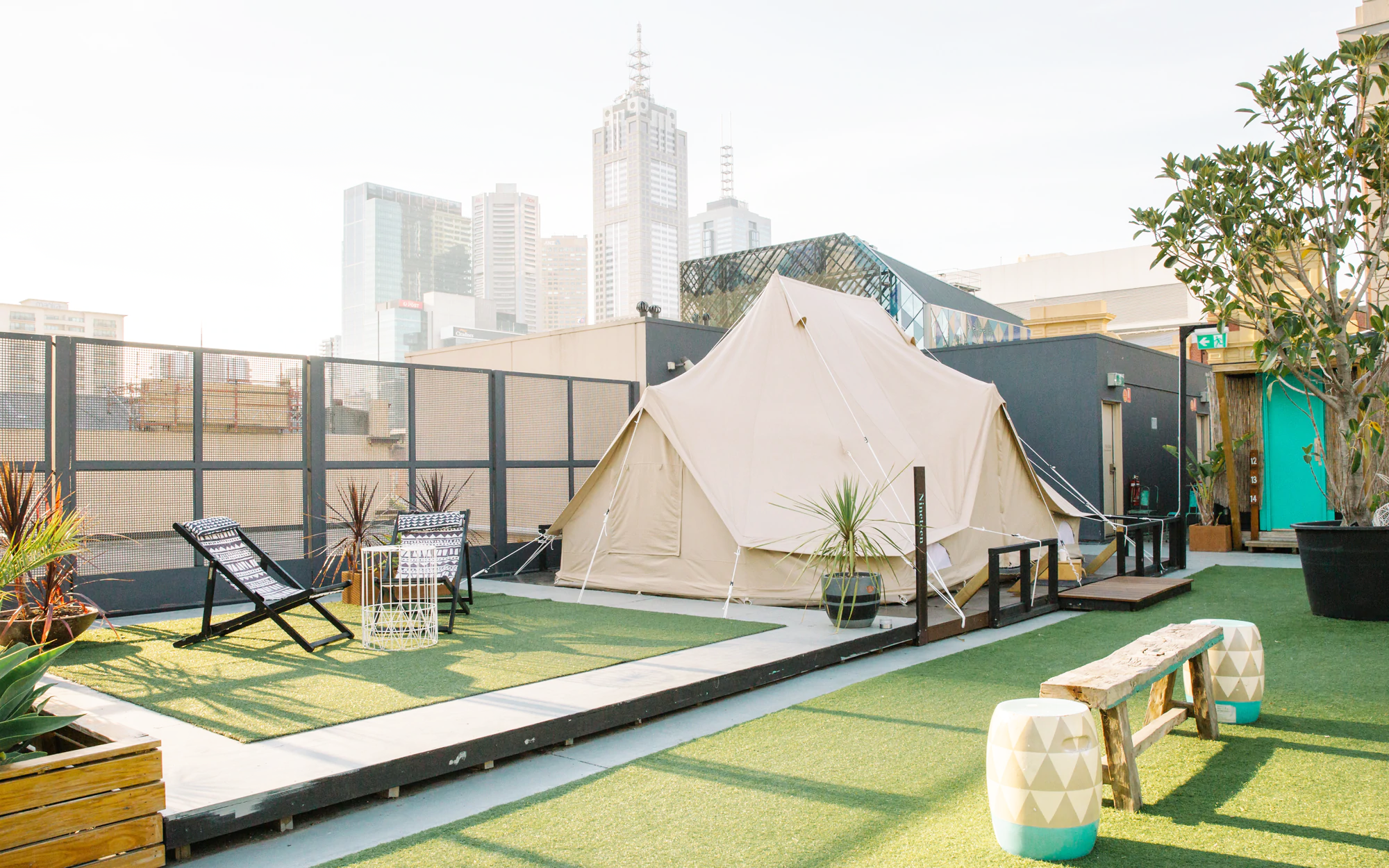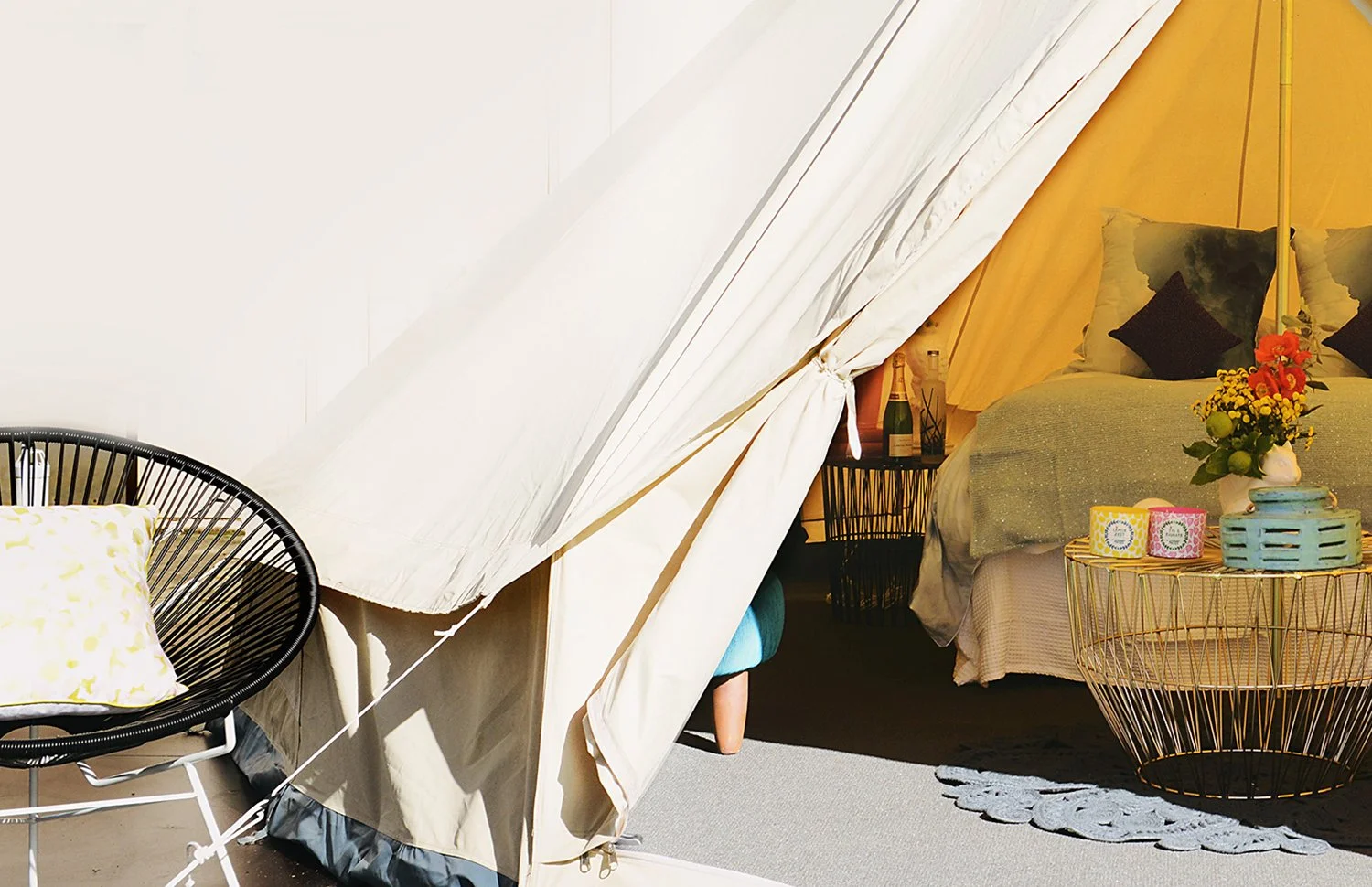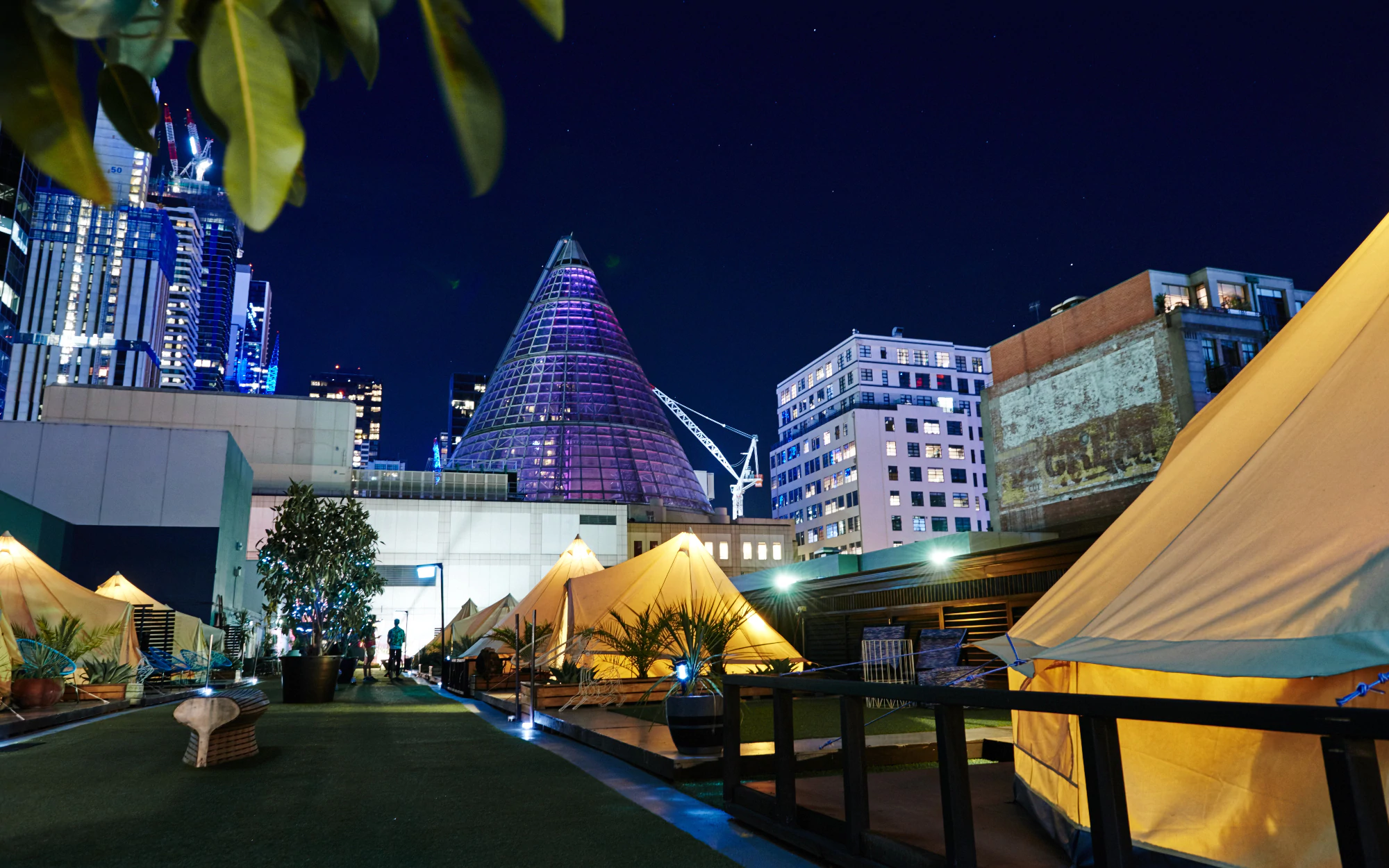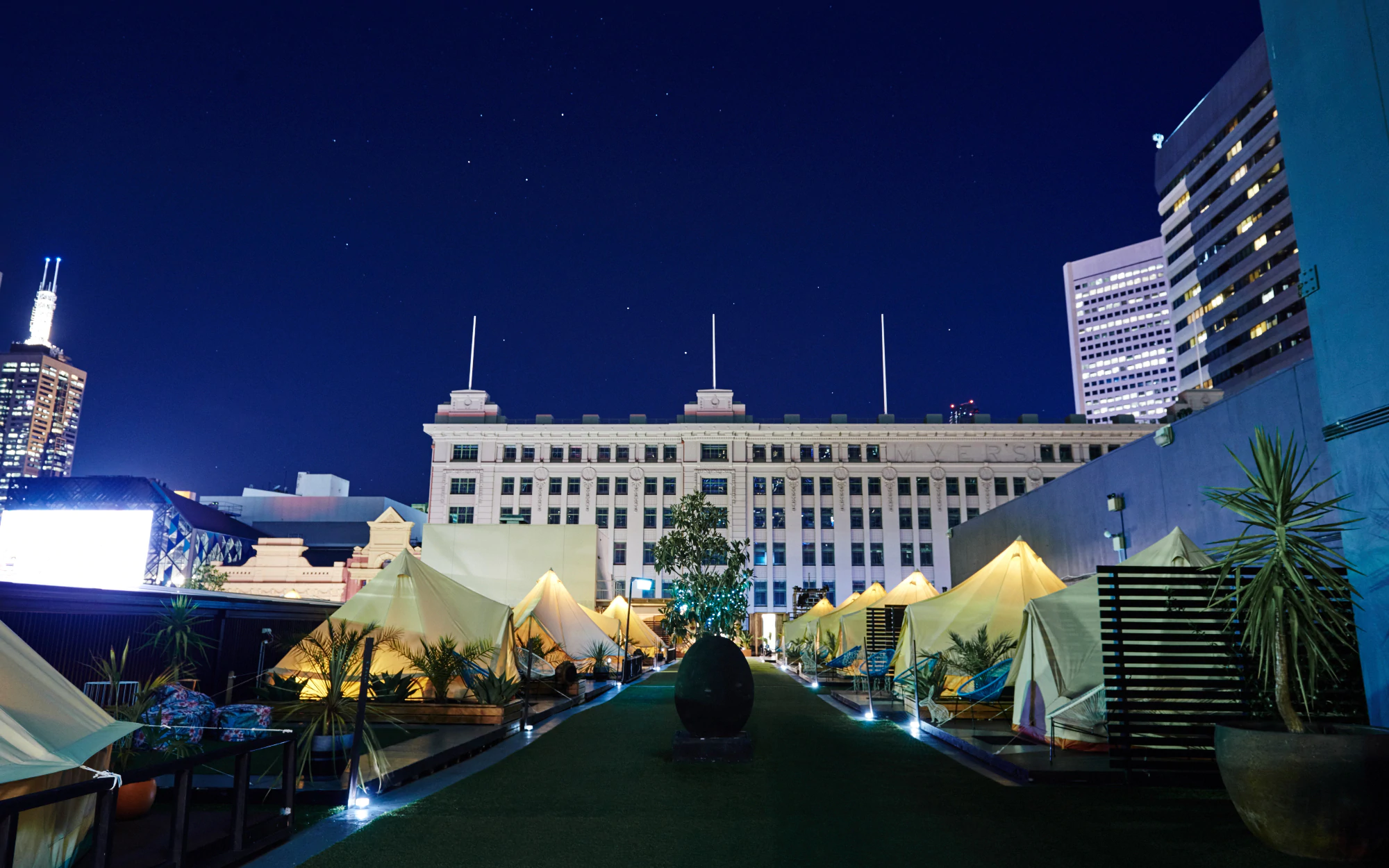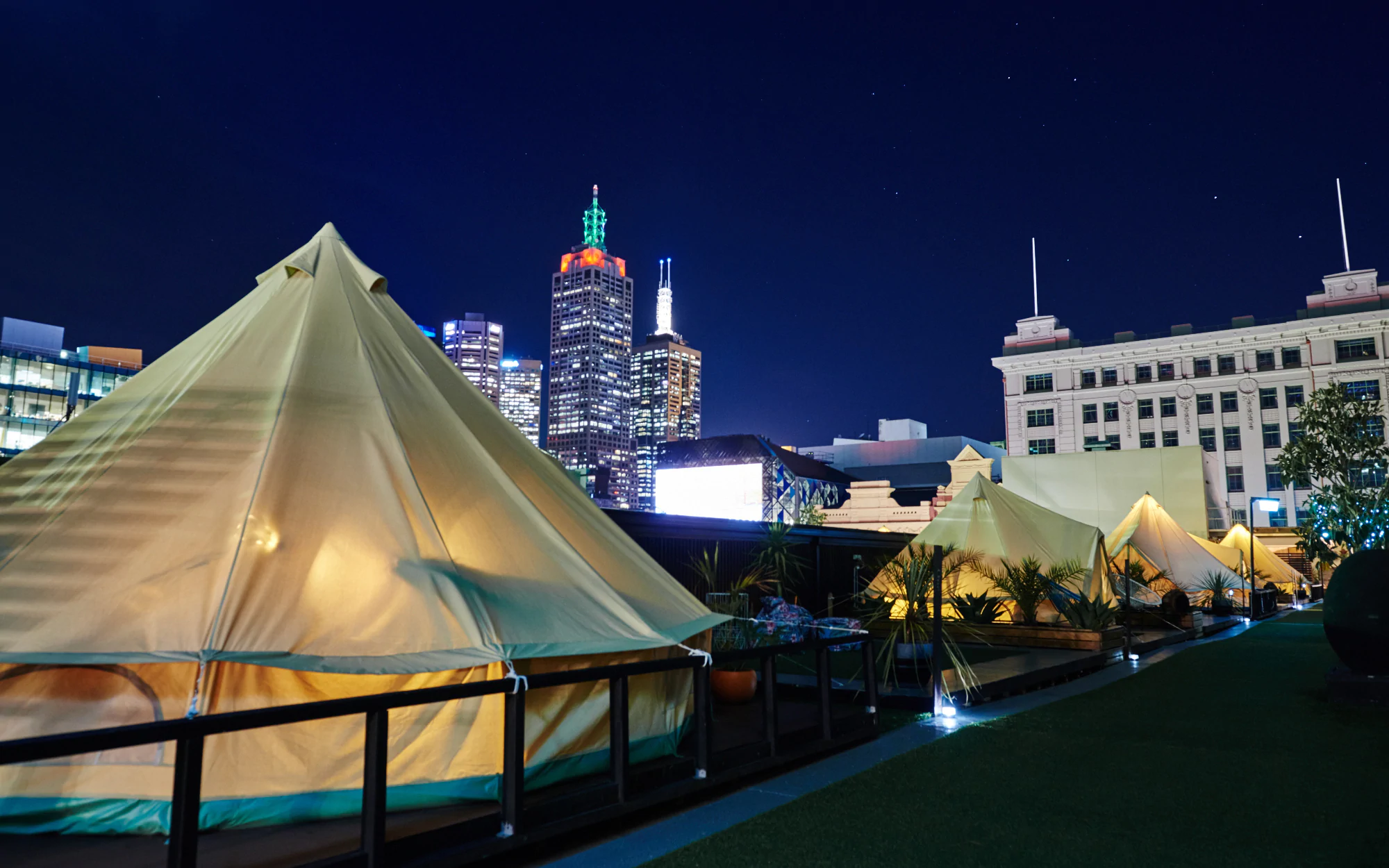The idea came to Jerome Borazio as he gazed out at the city skyline. Watching the urban landscape unfold, he thought, “What if people could experience the city differently—something more unique than just the view from a standard hotel room?”
His outlandish solution? A luxury campground in the heart of the city—on the top of Melbourne Central.
project overview
Redefined hotel accommodation for experiential travel by creating an experience at the intersection of the great outdoors and the glamorous nightlife. Planned as a three-month pop-up, the success of St. Jerome's — The Hotel led to a three-year run, #2 ranking on Tripadvisor and the Luxury Travel Guide award for 2016’s Unique Luxury Hotel of the Year.
Identified market expansion for Melbourne Central, securing a partnership to launch Australia’s first rooftop glamping site, generating AU$13M+ over three years.
Led brand development, earning a 2015 award for “Branding and Repositioning.” Managed design fit-out, achieving #2 on Tripadvisor and finalist recognition for the 2016 Service Design Good Design Award.
Drove AU$12.9M in media coverage across major outlets and the 2017 Australian Open TV campaign.
Built partnerships with Linen House, Stan, and T2. Managed corporate accounts, increasing bookings by 196%, with clients like Sephora, Nike, and Tourism Australia.
Jerome borazio — the founder
Before Jerome Borazio owned a collection of Melbourne bars, cafes, and music venues, he owned just one—St. Jerome's—a dive bar with three beers on tap and milk crates for seats.
The laneway bar revolutionized disused spaces and turned laneways from subcultural anomalies into something synonymous with Melbourne. Nighttime gigs sprawled out into the streets with artists who would later become known as Temper Trap and Florence & the Machine. Eventually, the performances morphed into a full-fledged festival branded after his namesake. St. Jerome's Laneway Festival now runs in cities throughout Australia, New Zealand, and Singapore and includes an exclusive SXSW showcase every year.
The call
Jerome called me on a Thursday afternoon.
"Leisha! I've got an idea. Glamping!"
"Glamping?" I asked.
"Yeah, let's use the VIP tents from the festival, find a rooftop and create the newest glamping site!"
"Okay, well…" I began searching for words.
"Okay, great! I'm off to Singapore for Laneway. Let's pitch to GPT on Monday. See you soon!"
Jerome had a knack for turning coal into gold, and as a previous colleague with an understanding of his brand, I jumped at the opportunity to create something from nothing. Without research, I knew GPT Group was one of Australia's largest diversified listed property firms. Its cornerstone property was Melbourne Central, a shopping center in the heart of the city. I managed a music and designer showcase for Melbourne Central a year earlier as part of their one-day shopping festival.
Following my call with Jerome, I conducted industry research to determine market opportunity, competitive advantage, and initial target audience. Growth in online shopping combined with shifts in retailing practices and consumer tastes had dismantled the traditional shopping mall model for years. While mall locations no longer fit the retail world, mixed-use developments could be big economic generators for their communities and cities. Staying relevant meant tenant diversification.
Within a few days, I envisioned and delivered a pitch resulting in a contract with GPT Group to build the country's first rooftop glamping site. The pitch relied on activating their unused rooftop and branded partnerships with existing retailers. A team led by art director Deon St. Mor would outfit the space to code standards, and I would develop a red-line plan for alcohol licensing and establish a pop-up precedent to duplicate for Melbourne's famed festival and tourism circuit, including Melbourne Cup, Formula One Grand Prix, L'Oreal Fashion Week and the Australian Open.
The Happy Camper, one of five suites (5m bell tent), along side an additional 25 standard rooms on top of Melbourne Central.
the design
St. Jerome's — The Hotel was decidedly less "into the woods" and uniquely more "urban jungle." The goal of the brand was to harmonize all seemingly opposing elements.
Camping vs. Luxury, Nature vs. Urban, and Down-to-Earth vs. High End. The primary logo derived inspiration from the original floor plan. An overhead view of the tent, with its opening, served as the symbol with contrasting typefaces used for the wordmark.
I designed a floor plan for twenty bell tents, dividing the space into two, separating VIP tents with ensuites from tents with shared bathrooms and shower services. Each 172 sqft tent could fit a queen bed, side tables, dresser, lighting, heating, and cooling. Partnerships with Linen House and additional homewares companies made the interior design selection possible. Other hospitality elements, including linens, welcome hampers, and staff uniforms, highlighted Melbourne Central retailers like Converse and Country Road. Guests' amenities ranged from personal shoppers to progressive dinners.
the success


